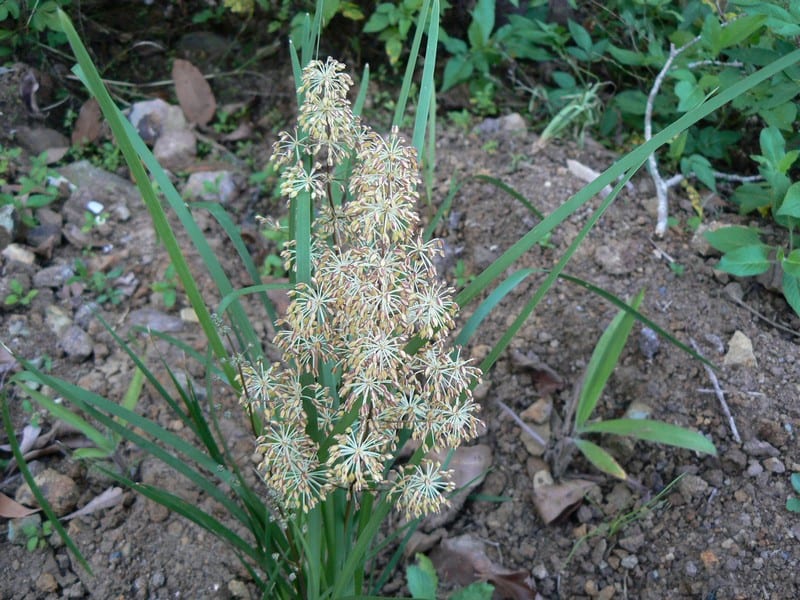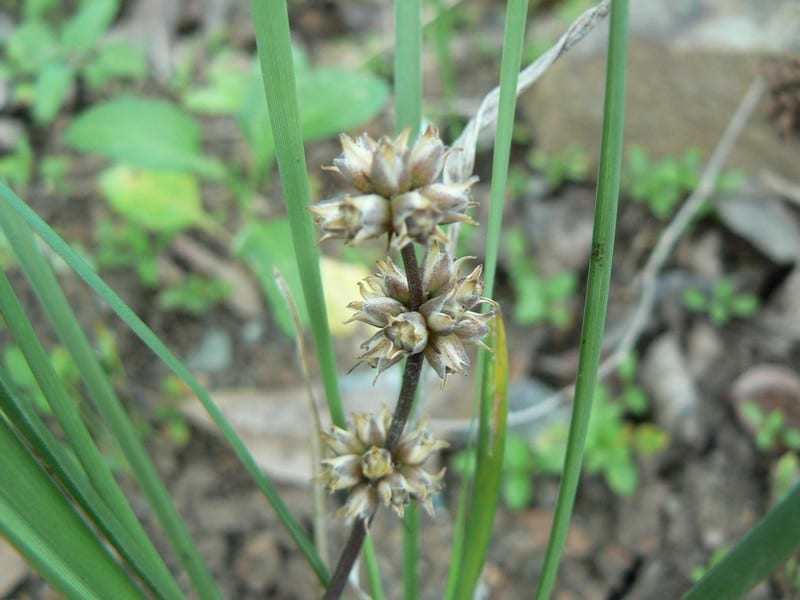Many- flowered mat rush
Lomandra multiflora subsp. multiflora, Fam. Laxmanniaceae






Tussocky, rush-like plant that can grow to 90cm high though locally is often 30cm or less.
| Weed Category: | |
| Weed: | No |
| Form or habit: | Grass or grass-like plant |
| Family: | Laxmanniaceae |
| Leaf: | Grey, grey-green or bluish, sheathing at the base, flat or slightly concave, 25 to 90cm x 1.5-3.0mm. Leaf ends entire and with a blunt tip. |
| Flower conspicuous: | Conspicuous |
| Flower colour: |
Yellow, Purple |
| Flower description: | Flowers occur on separate male and female plants. Male flowers are bell-shaped, 2-3mm long. Individual female flowers are larger, sepals purplish, petals yellow, borne in clusters on tall upright heads usually at the base of but sometimes to the height of the leaves. |
| Fruit conspicuous: | Conspicuous |
| Fruit colour: |
Brown, Cream |
| Fruit: | Dry |
| Fruit description: | Brown to cream capsule opening to reveal 4 whitish seeds which look a little like a rice grain. |
| Habitat: | Open forest, woodland. |
| Distribution | It occurs in woodlands and forests and has a widespread distribution through eastern Qld, NT coastal NSW and Vic. |
| Food source for: | Butterflies: common white spot skipper, eliena skipper, laccus skipper, rare white spot skipper, symmomus skipper. |
| Toxicity: | No toxicity known |
| Origin: | Australia |
| Notes: | Named from Lomandra...from Greek loma, edge or margin and andros, male, a reference to the circular margin of the anthers (male parts) in some species. multiflora...from Latin multi, many and flora a flower, referring to the flowering habit of the plant. Propagated from seed or cuttings taken from prostrate stems. Would make a good addition to rockery gardens. Will grow in full sun or part shade in a wide range of conditions. |
| Information sources: | Melzer R. & Plumb J. (2007) Plants of Capricornia., Pers. comm C. Peterson, Townsend K. & the Society for Growing Australian Plant Townsville Branch Inc. (1994) Across the Top: Gardening with Australian Plants in the tropics. |